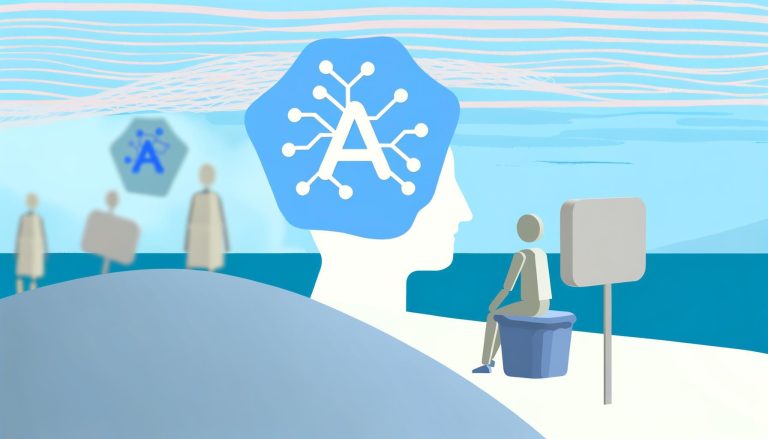In a world where traditional forms of therapy are continually evolving, AI-assisted storytelling therapy has emerged as a promising tool for healing through narrative. By leveraging the power of artificial intelligence, individuals can engage in a therapeutic process that uncovers deep-rooted emotions, fosters self-awareness, and promotes psychological healing. This article explores how AI-assisted storytelling therapy functions, its benefits, and practical tips for incorporating it into your mental health journey.
What is AI-Assisted Storytelling Therapy?
AI-assisted storytelling therapy is a form of narrative therapy that utilizes artificial intelligence to help individuals construct and interpret personal stories. Unlike traditional therapy, which relies solely on human therapists, this innovative approach integrates AI technologies to provide personalized, real-time support. Through AI algorithms, users can explore their narratives, uncover hidden patterns, and gain new insights.
The Role of Artificial Intelligence
Artificial intelligence plays a crucial role by analyzing user inputs and generating meaningful responses that guide the healing process. AI algorithms can:
- Identify recurring themes and patterns in narratives
- Offer personalized feedback
- Suggest alternative perspectives and coping strategies
- Provide continuous support outside of traditional therapy sessions
How AI-Assisted Storytelling Therapy Works
The process of AI-assisted storytelling therapy typically involves several stages. Understanding these stages can help you appreciate the depth and potential of this therapeutic approach.
1. Narrative Construction
The first step in AI-assisted storytelling therapy is narrative construction. Here, individuals are encouraged to craft their personal stories, focusing on significant life events, emotions, and experiences. AI tools can prompt users with questions and themes to explore, facilitating a comprehensive and reflective storytelling process.
2. Analysis and Insight Generation
Once the narrative is constructed, AI algorithms analyze the content to identify key themes, emotional patterns, and potential areas of concern. The AI can highlight connections between past experiences and current emotions, offering insights that might otherwise go unnoticed. This deeper understanding empowers individuals to address underlying issues.
3. Personalized Feedback and Support
After the analysis, the AI provides personalized feedback and suggestions. This feedback can include:
- Alternative interpretations of events
- Cognitive-behavioral strategies for reframing thoughts
- Mindfulness exercises to enhance emotional regulation
- Suggestions for further exploration in future sessions
4. Continuous Engagement
One of the primary benefits of AI is its ability to provide continuous support. Users can engage with AI-powered tools at any time, ensuring they have access to therapeutic insights and guidance whenever needed. This continuous engagement fosters a deeper sense of connection and progress in the healing journey.
Benefits of AI-Assisted Storytelling Therapy
AI-assisted storytelling therapy offers numerous benefits that contribute to its efficacy as a therapeutic tool. Here are some of the key advantages:
Accessibility
With AI technology, therapeutic support becomes more accessible to a broader audience. Individuals who may face barriers to traditional therapy, such as geographical limitations or time constraints, can still access valuable mental health resources through AI-assisted platforms.
Personalization
AI algorithms tailor feedback and suggestions to the individual user, ensuring that the therapeutic process is highly personalized. This tailored approach increases the relevance and impact of the therapy, making it more effective for users.
Consistency and Availability
The continuous availability of AI-assisted tools means that users can engage in therapeutic activities consistently. This consistent engagement can lead to more sustained progress and long-term mental health benefits.
Cost-Effectiveness
Compared to traditional therapy, AI-assisted storytelling therapy can be more cost-effective. This affordability makes it a viable option for individuals seeking mental health support without the financial burden of regular therapy sessions.
Enhanced Self-Reflection
The process of constructing and analyzing personal narratives encourages deep self-reflection. This reflective practice helps individuals gain a better understanding of themselves, their emotions, and their behavioral patterns.
Anonymity and Privacy
For some individuals, discussing personal issues with a human therapist can feel daunting. AI-assisted storytelling therapy offers a degree of anonymity and privacy, making it easier for users to open up and share their stories without fear of judgment.
Practical Tips for Using AI-Assisted Storytelling Therapy
To maximize the benefits of AI-assisted storytelling therapy, consider these practical tips:
Create a Comfortable Environment
Choose a quiet, comfortable space where you can focus on your narrative without distractions. A conducive environment can enhance your ability to engage deeply with the therapeutic process.
Be Honest and Open
Authenticity is key to successful narrative therapy. Be honest and open when constructing your stories, allowing yourself to explore difficult emotions and experiences. Remember, the goal is to gain insight and healing.
Engage Regularly
Consistency is vital for progress. Try to engage with AI-assisted tools regularly, setting aside dedicated time for therapy sessions. This regular practice will help reinforce positive changes and deepen your self-awareness.
Reflect on Feedback
Take the time to reflect on the feedback and insights provided by the AI. Consider how these suggestions apply to your life and how you can implement them to foster growth and healing.
Combine with Traditional Therapy
AI-assisted storytelling therapy can complement traditional therapy. If you are already working with a therapist, discuss how AI tools can enhance your therapeutic journey. Combining both approaches can offer a more comprehensive support system.
Conclusion
AI-assisted storytelling therapy is a powerful tool that leverages the potential of artificial intelligence to facilitate healing through narrative. By constructing and analyzing personal stories, individuals can gain valuable insights, enhance self-awareness, and address underlying emotional issues. The accessibility, personalization, and continuous support offered by AI-assisted tools make this therapy a promising option for those seeking mental health support.
As you explore AI-assisted storytelling therapy, remember to create a comfortable environment, engage regularly, and reflect on the feedback provided. By embracing this innovative approach, you can embark on a journey of self-discovery and healing that promotes long-term mental well-being.
For those looking to integrate structured journaling and goal tracking into their therapeutic journey, the Zenora App offers features such as moods & habits tracking, journal entries, and goal setting, which can complement AI-assisted storytelling therapy to enhance your mental health experience.





